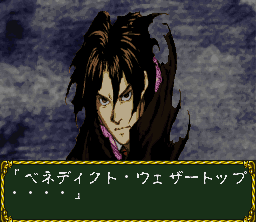Retro Replay Review
Gameplay
Laplace no Ma delivers a unique blend of classic Japanese RPG mechanics with chilling horror elements. From the outset, you’re tasked with assembling a balanced party of up to five characters, choosing from Dilettante, Medium, Detective, Scientist, and Journalist classes. Each class offers distinct tactical advantages: melee prowess, offensive magic, defensive spells, contraptions, or the all-important ability to photograph monsters for income. This class system encourages experimentation, as you must find the right synergy to survive the mansion’s undead threats.
Exploration is central to the experience. While the Weathertop mansion is the focal point, you aren’t locked inside its walls—at least not permanently. You can return to Newcam to resupply, purchase new equipment, and restock healing items. This ebb and flow between town and mansion adds strategic depth: should you push deeper into cursed corridors, or make a detour to ensure your party is fully prepared? The ability to retreat and regroup gives the sense of a true RPG rather than a linear survival horror.
Combat is handled via random, turn-based encounters in a first-person perspective that heightens the tension. You never see the enemy until after the battle begins, reinforcing the feeling of dread each time you enter a new room. Battles demand careful resource management—magic points are scarce, and healing items can be expensive. Additionally, your Journalist’s photographs are your primary source of income, so you must balance offense with capturing monsters on film. This risk-reward dynamic keeps every skirmish fresh and engaging.
Beyond the mansion, you’ll venture to other locales such as an ominous castle and fog-shrouded forests. Each area introduces new puzzles and environmental hazards, requiring you to leverage each character’s abilities—whether picking locks as a Detective or dispelling curses as a Medium. This broad scope ensures the gameplay never stagnates, weaving traditional RPG exploration with survival-horror puzzle solving.
Graphics
Given Laplace no Ma’s 1987 origins on Japanese home computers, its graphics are charmingly retro. Sprites are rendered in simple but evocative pixel art, capturing the gothic architecture of Weathertop and the grotesque silhouettes of its undead inhabitants. Though primitive by modern standards, the visuals effectively establish an unsettling atmosphere—flickering candles, creaking doors, and shadowy hallways come alive with limited animations.
Character portraits and monster designs stand out for their attention to detail. The hero and recruitable characters each have distinctive looks that convey their class identities, while monsters range from shambling zombies to more abstract, nightmare-inducing forms. The first-person battle view relies on minimalist graphics, but clever use of color and shading amplifies the horror, making each encounter feel ominous.
The game’s world map and town visuals offer a welcome contrast to the mansion’s claustrophobic corridors. Streets of Newcam, rendered in simple top-down visuals, evoke a small New England hamlet with wartime-era architecture. Shop and inn interfaces are straightforward, ensuring that inventory management and equipment purchases are intuitive. Though devoid of flashy effects, the cohesive art style immerses you in the 1924 setting.
Music and sound effects play a vital role in the presentation. A sparse but haunting soundtrack underscores exploration and battle, while sudden sound cues—a door creaking, a monster’s roar—inject tension at key moments. The audio design compensates for graphical limitations, weaving a tapestry of dread that remains memorable long after you turn off the game.
Story
Laplace no Ma’s narrative centers on the cursed Weathertop mansion on the outskirts of Newcam, Massachusetts. In 1924, its last owner, Benedict Weathertop, delved into black magic, murdered his parents, and filled the estate with undead. Local legend warns all would-be explorers, yet the disappearance of two curious boys—and the unknown fate of a young girl—draws you, the protagonist, into the heart of darkness.
The game unfolds like a mystery, with clues scattered throughout mansion rooms and town establishments. Newspaper clippings, diaries, and cryptic runes piece together Benedict’s descent into madness and the nature of the rituals he performed. As you chase leads—from haunted libraries to hidden chambers—the stakes escalate: will you rescue the missing girl, uncover Benedict’s final ritual site, or fall prey to the very horrors you seek to understand?
Character interactions enrich the plot. Your four companions each have motivations for joining the investigation, and occasional dialogue choices let you shape how they respond to danger. While NPCs in town offer side quests—retrieving lost items, locating exorcists, investigating local lore—these detours deepen the world-building and reward exploration. The story strikes a balance between gothic horror and classic RPG questing.
The pacing is deliberate, allowing tension to build as you unlock new wings of the mansion and grapple with moral choices. Early thrills give way to a labyrinthine back half, where time-sensitive events and branching paths reveal multiple possible endings. This narrative complexity encourages replayability, as you may return to see how different decisions affect the final confrontation with the Devil of Laplace.
Overall Experience
Laplace no Ma stands out as an ambitious hybrid of horror and RPG at a time when most games favored one genre or the other. Its ability to blend turn-based battles with a foreboding atmosphere makes for a gameplay loop that is both familiar and refreshingly tense. You’ll find yourself weighing the risk of exploring deeper corridors against the need to conserve resources, creating a constant sense of suspense.
The game’s retro presentation may feel dated to modern players, but its evocative art and sound design capture the essence of early survival-horror experiments. The class system and first-person combat add strategic depth often missing from pure horror titles, while the ability to return to town breaks the monotony of enclosed environments. This balance ensures the experience remains engaging over its substantial playtime.
Narratively, Laplace no Ma delivers a rich, gothic tale that rewards patient exploration and careful note-taking. The mansion’s lore, combined with the broader mysteries of Newcam, offers more than just jump scares—it presents an intricate puzzle you piece together through environmental storytelling. Multiple endings and side quests boost replay value for dedicated RPG fans.
For enthusiasts of vintage Japanese RPGs and survival horror, Laplace no Ma is a hidden gem. Its deliberate pace, atmospheric tension, and robust RPG mechanics make it a compelling adventure. While it may not match modern productions in visuals or user convenience, its innovative fusion of genres and haunting narrative ensure its place in gaming history—and in the collections of players seeking a uniquely eerie RPG experience.
 Retro Replay Retro Replay gaming reviews, news, emulation, geek stuff and more!
Retro Replay Retro Replay gaming reviews, news, emulation, geek stuff and more!









Reviews
There are no reviews yet.